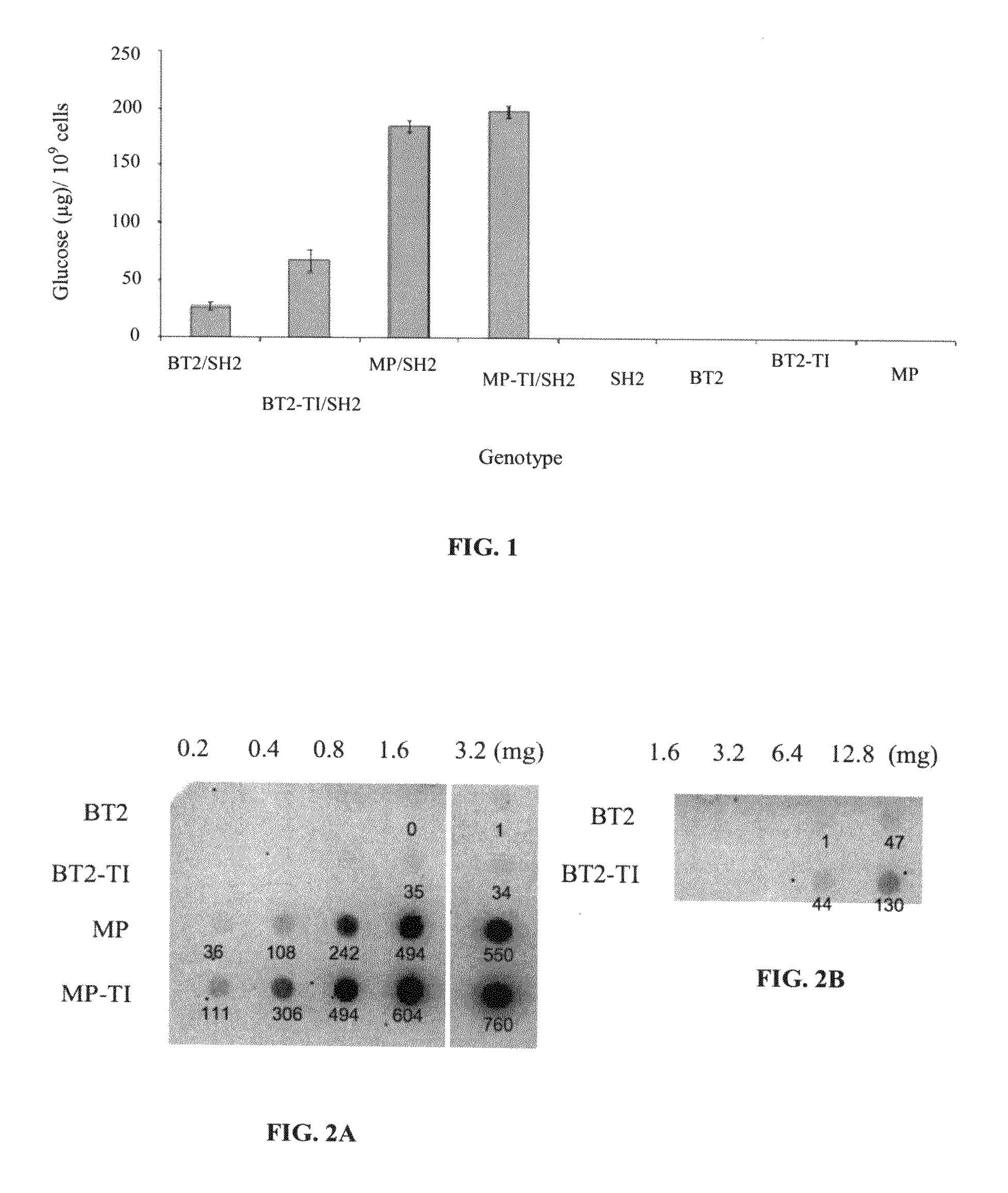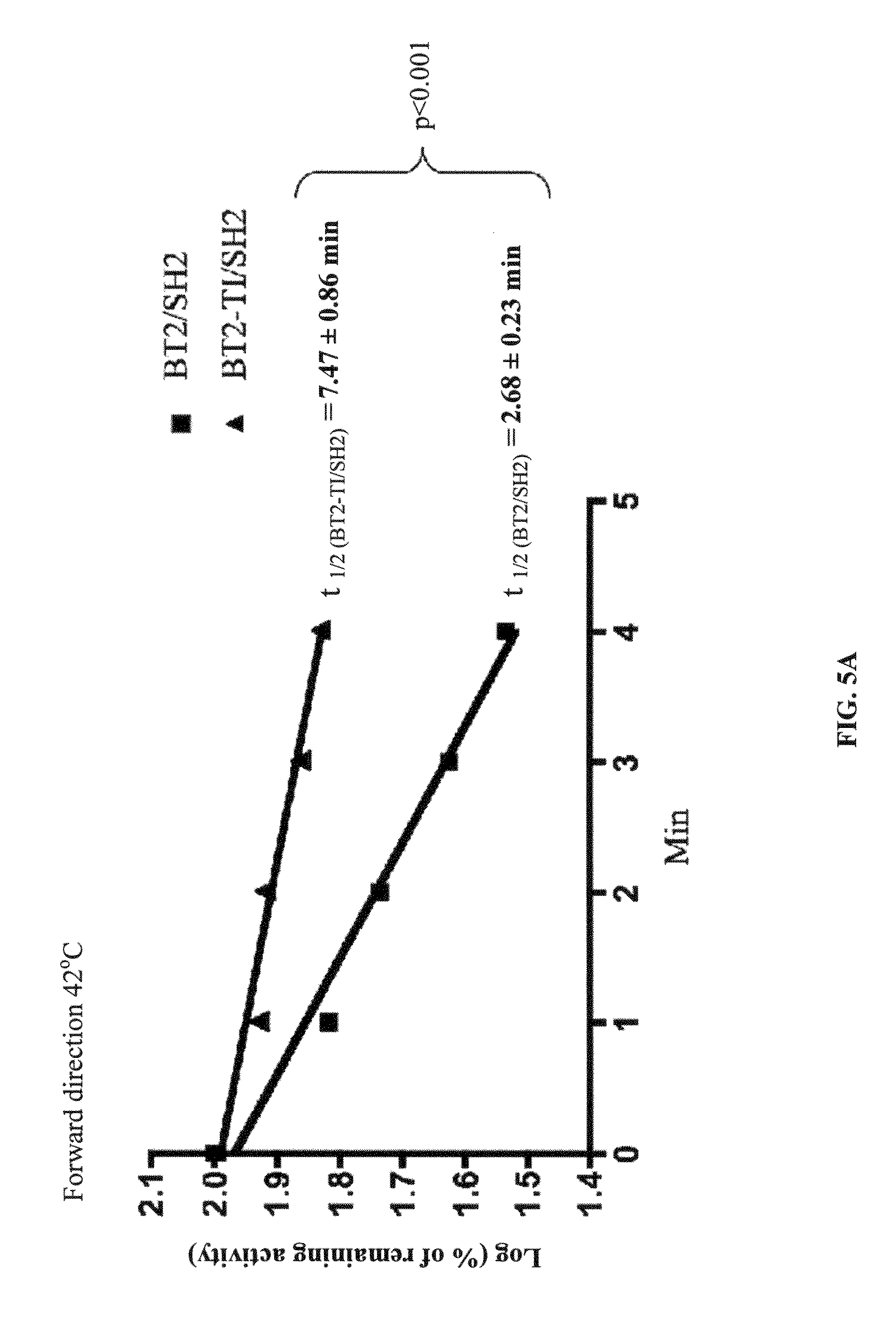Heat resistant plants and plant tissues and methods and materials for making and using same
a technology for plants and plant tissues, applied in the field of heat resistance plants and plant tissues and methods and materials for making and using same, can solve the problems of reducing the availability and transportation of photosynthetes from sources, poor pollination, and reducing cell and granule size and number, so as to increase the resistance of plants or plant tissues, reduce yield losses, and increase the effect of heat resistan
- Summary
- Abstract
- Description
- Claims
- Application Information
AI Technical Summary
Benefits of technology
Problems solved by technology
Method used
Image
Examples
example 1
[0092]A mutant Bt2 library was created by error-prone PCR. The mutational load was ˜2 non-synonymous mutations per clone (Georgelis et al 2007). The mutants were expressed in E. coli along with a wildtype Sh2 gene. Approximately 50,000 colonies were screened for glycogen production. Ten dark staining colonies were picked. The two darkest staining Bt2 mutants were sequenced. Both had the same non-synonymous mutation resulting in a change of amino acid 462 from threonine to isoleucine (TI). The threonine in that position is absolutely conserved among the higher plant small subunits (data not shown). BT2-TI / SH2 (BT2 comprising the TI mutation and complexed with SH2) produced more glycogen than did BT2 / SH2 (FIG. 1). Cells expressing BT2-TI and BT2, as homotetramers, did not produce detectable amounts of glycogen (FIG. 1). This indicates that the amount of E. coli-synthesized glycogen depends exclusively on the complex of BT2-TI or BT2 with SH2.
[0093]A dot-blot of the crude extracts from...
example 2
[0100]The subject invention provides for agronomically important plant AGPase variants by using random mutagenesis and a heterologous bacterial expression system. BT2-TI was isolated as a small subunit variant that increased the amount of glycogen produced by E. coli cells when expressed along with SH2. Cells expressing BT2-TI / SH2 had 20-fold higher AGPase activity than cells expressing BT2 / SH2. A dot-blot indicated that the crude protein extract from cells expressing BT2-TI / SH2 had more detectable BT2 protein compared to cells expressing BT2 / SH2. This result could be attributed to more efficient transcription / translation or to greater AGPase stability and / or solubility. As mentioned previously, a more efficient transcription / translation is unlikely based on codon usage. On the other hand, it was showed that the purified form of BT2-TI / SH2 was significantly more heat-stable than the purified form of BT2 / SH2. This may render the BT2-TI / SH2 complex less prone to proteolysis and / or agg...
PUM
| Property | Measurement | Unit |
|---|---|---|
| temperature | aaaaa | aaaaa |
| temperature | aaaaa | aaaaa |
| temperatures | aaaaa | aaaaa |
Abstract
Description
Claims
Application Information
 Login to View More
Login to View More - R&D
- Intellectual Property
- Life Sciences
- Materials
- Tech Scout
- Unparalleled Data Quality
- Higher Quality Content
- 60% Fewer Hallucinations
Browse by: Latest US Patents, China's latest patents, Technical Efficacy Thesaurus, Application Domain, Technology Topic, Popular Technical Reports.
© 2025 PatSnap. All rights reserved.Legal|Privacy policy|Modern Slavery Act Transparency Statement|Sitemap|About US| Contact US: help@patsnap.com



